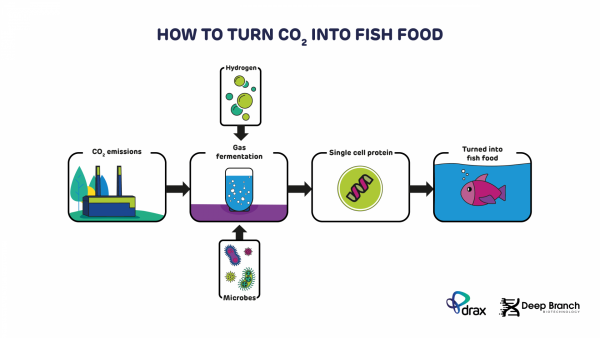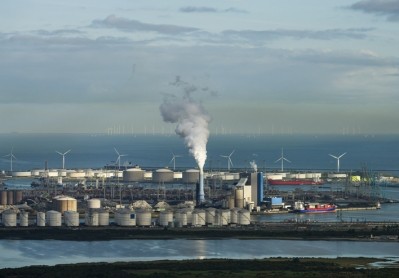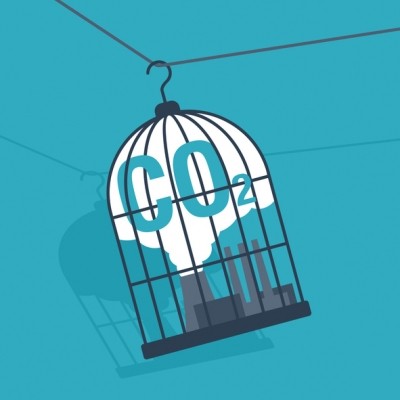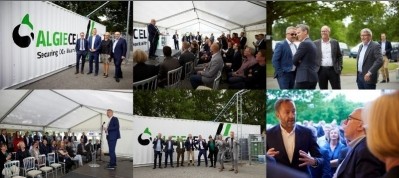Drax and Deep Branch team up on carbon capture to feed project
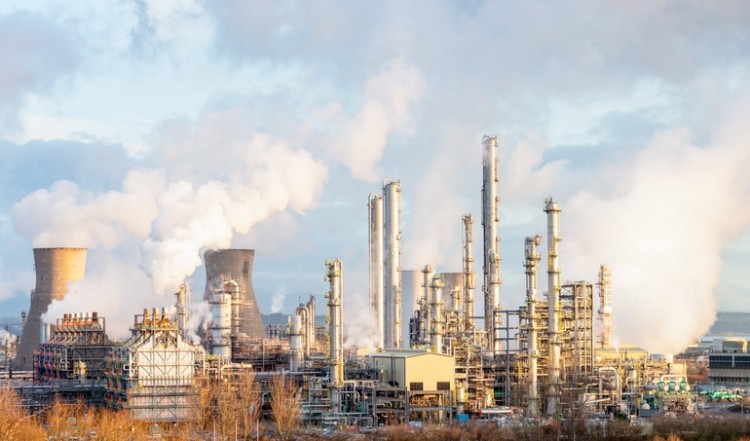
The company, only founded in July 2018, is now going into the field, demonstrating its technology at the site of its first commercial partner, the Drax Group, news of which has just been announced today [June 17].
Drax said it will work with the biotech start-up to explore the feasibility of using the power station’s carbon dioxide emissions to make proteins for sustainable animal feed products.
Deep Branch will place a pilot plant within Drax’s Carbon Capture Usage and Storage (CCUS) Incubation Area at its power station in North Yorkshire. It will extract flue gases from the power station’s renewable electricity generation to feed to microbes, which can make single cell proteins for feed.
The Deep Branch pilot at the Drax site will get underway in the autumn.
The worldwide protein extracts from single cell protein sources market was valued at $5.3bn in 2017 and is expected to advance at a CAGR of 8.6% between 2018 and 2023, according to P&S Intelligence. US based, Calysta, and Danish player, UniBio, are two of the leading players in the animal feed targeted single cell protein space.
The inside track
Peter Rowe, Deep Branch CEO and co-founder, spoke to FeedNavigator earlier this month about the potential for the innovative technology.
“We use carbon dioxide that would otherwise be released into the atmosphere meaning that it has a positive environmental impact. The product produced is a microbial biomass. It has a very high protein content.“
The company relies on a combination of CO2 and hydrogen as feedstock in its single cell protein (SCP) production process. The proprietary bacterial strain used as a biological catalyst in the gas fermentation process belongs to a group of hydrogen oxidizing bacteria, he said.
Much of the initial work done on the technology was grant funded by Innovate UK. Recent investment in Deep Branch from life science incubator and business collective, BioCity, will cover the construction costs of the mobile production unit for use at its new commercial partner’s power station.
“We now have lab scale validation so we can produce SCP consistently; we see that if 10kg of CO2 goes into our process, then 7kg of protein comes out.
“In the lab, we can replicate the gases that come out of industrial processes and see how it feeds into our system. However, the only way we can prove this works at scale is actually doing it in situ. So what we are doing at the moment is building a containerized unit that can be shipped to a commercial partner’s site for demonstration of how a waste product can be transformed into a valuable feedstock."
The idea is to have a dataset of the process over several weeks, of the different exhausts coming out at different times and any closure for maintenance, so they can show how the technology works over a long period.
That data will prove Deep Branch’s process is both technically and economically viable, providing the trigger for the founders to raise investment to build a larger production facility, a permanent structure on a site proximal to a commercial partner, he said.
Feeding trials
“At that production scale, you can start using the SCP in animal feed.”
Prior to getting to that point, the company intends to carry out nutritional testing in farmed fish and animals, beyond a desktop study.
“The mobile unit will start generating enough protein for us to do feed trials. We have been speaking to a number of large European compound feed producers that target both the monogastric and aquaculture markets. We recognized very early on that there is so much expertise that we will never be able to have in house, and that we need to partner with big feed companies, which have a huge database of nutritional requirements, the ability to test raw materials and the commercial interest in implementing alternative protein technologies.”
Electricity input costs
The main cost in Deep Branch’s carbon capture process relates to the hydrogen production aspect, he said.
“When you generate hydrogen in a green way you use electricity to split water into oxygen and hydrogen. This process is relatively intensive so it comes down to how cheap the electricity source is. The cost effectiveness of our product depends on where we deploy in the world. Based on our economic models, most markets in North West Europe should be able to produce our protein at a price that is competitive with conventional protein sources.”
Industrial processes like chemical production, cement and lime manufacturer, and even sugar refinery all produce a lot of carbon dioxide (CO2) so there has to be work done to address those emissions, said Rowe.
“A normal cement producer will be pumping out something like 1m tons of CO2 per year. If you were to utilize all of that CO2 in our process, it would yield around 700,000 tons of single cell protein. Now, of course, there are many technical challenges involved in getting our process up to that scale but we are already doing a lot of work in this respect.“
Carbon capture trends
There is substantial interest worldwide in studying various methods of addressing the issue of CO2 emissions from industrial processes, said Rowe.
“The problem with conventional carbon capture and storage (CCS) technologies, though, is that you are always going to have to think about how that works in terms of the process economics. At the moment, polluters in the EU will be charged €25 per ton of C02 they emit, which means that if you have a big industrial process that runs on fine margins, any CCS technology you implement would have to have a cost comparable to or preferably cheaper to that €25 per ton.”
With the CCS technologies available today, there is nothing that meets the scale or the price required, he added.
“Whereas, if you use carbon dioxide as a feedstock for a process that it is creating a more sustainable alternative to what is currently on the market, such as with our process, then, suddenly, [CO2 emitters] see such an approach as more of a business opportunity, a way of valorizing a waste stream and generating an additional revenue stream.”
It is important to note that Deep Branch’s technology is part of a whole generation of new tech that is coming through for carbon capture utilization (CCU), he stressed. “It will not be a silver bullet for the CO2 problem but part of a whole range of ways people are using CO2 effectively.”
Attracting investment
Deep Branch is aiming to be on the market with full industrial scale production of its single cell protein by 2024. “You have got to do things in a step wise manner.”
There are different challenges associated with growing this kind of business as it is capital intensive, said Rowe.
“We have big ambitions and we are delivering very well to date. It is going to be interesting to see how long it takes to get this to market; there will be obstacles along the way, but none that we really foresee as being insurmountable.“
How do they convince investors to get on board?
“Different investors have different priorities. Impact investment looks to back technologies that create societal and environmental value, and there is a lot of growth in that space.
“Ultimately, ours is a process that has the scope to generate a lot of revenue so investors that appreciate that it is going to take time and capital and certain elements of risk to get there are still engaged - they know if it lives up to the potential that it has, it is going to make a lot of money.”
Working with investors that have a niche focus is beneficial as their network can offer synergistic alliances, he added.
The feed protein gap
Rowe, a molecular biologist by training, got commercial experience after completing his PhD, working in a number of biotech companies, the last one being active in the agriculture space. “Through that, I became aware of the protein gap in the feed sector, the market demand and the amount of funding going into the alternative protein space.”
He and his other co-founders, former colleagues, saw that the technology they had been working on for converting industrial emissions into biofuels had the potential to be turned on its head and used to produce feed protein. A desktop study confirmed the feasibility of such an approach.
“As a casual observer, you can see that the growth in insect based and other alternative protein sources is there, it is just a question of being able to provide something at the right price point and with scalability.
“There is a huge level of complexity about what goes into an animal feed, and we know that any one protein source most often won’t be sufficient to meet the full nutritional demands of an animal.
“We are not talking about disruption, we are not about displacing any conventional protein sources, rather we are going to be complementing them and trying [to help fish and livestock production] meet the [animal feed and food] demand expected with the extra 2.5 billion people in the world by 2050.”
